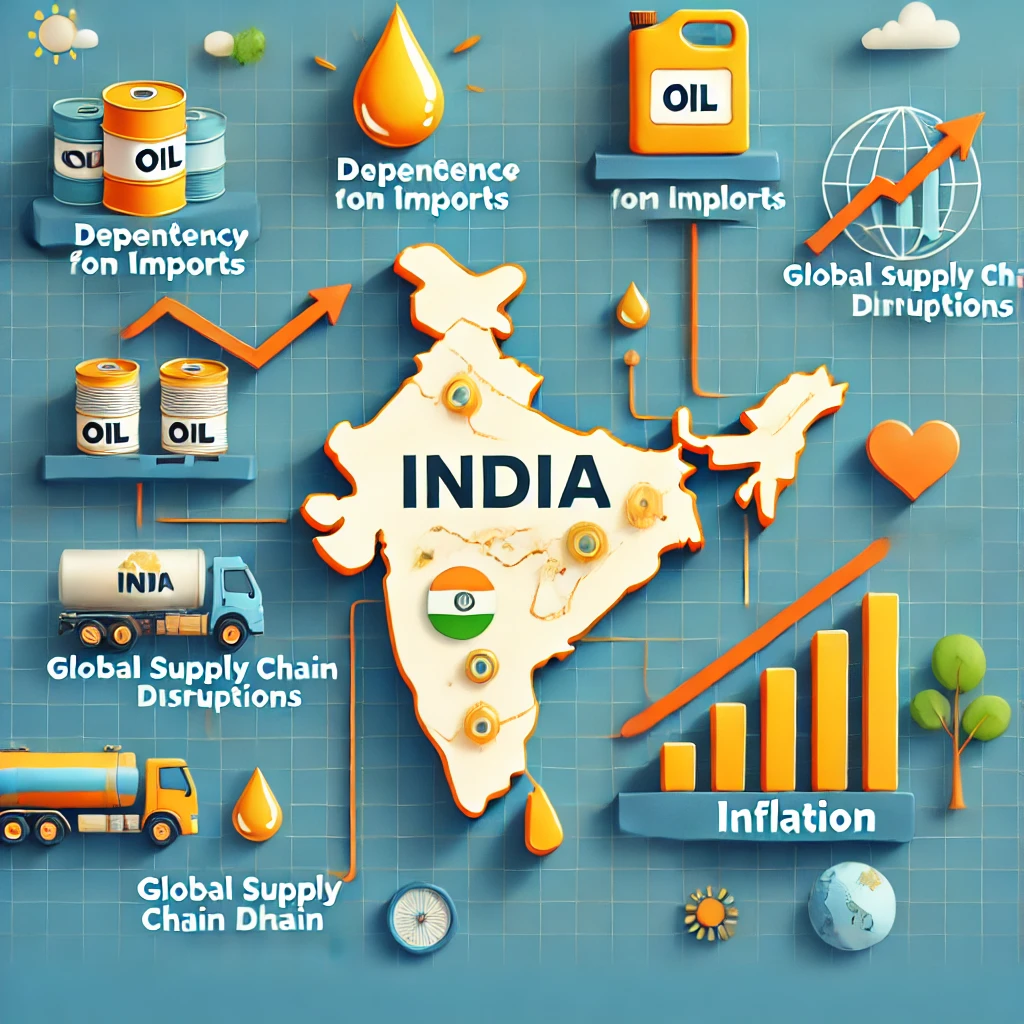
It’s a typical evening, and you’re strolling through the local market. As you pass by the grocery store, you overhear a conversation. “Can you believe it? The price of cooking oil has gone up again!” The frustration in the shopper’s voice is noticeable, and it’s something many of us feel. Whether you’re cooking a family meal or running a food business, rising oil prices have impacted everyone. But why are edible oil prices skyrocketing in India? Let’s dive into this issue, uncover the reasons, and explore how it’s affecting everyday lives.
The Current Scenario of Oil Prices in India
India is one of the largest consumers of edible oil globally, importing over 60% of its total edible oil requirements. In recent years, the prices of edible oil—including palm, soybean, and sunflower oil—have seen a sharp rise, causing concerns among households and businesses alike.
According to the Ministry of Consumer Affairs, the average retail price of edible oils increased by 30% between 2020 and 2023. For instance, palm oil, one of the most consumed edible oils in India, jumped from around ₹100 per liter to nearly ₹160 per liter in this period.
But what’s driving this surge? Let’s break it down.
Factors Contributing to Rising Oil Prices
1. Dependency on Imports
India imports the majority of its edible oil, primarily from Indonesia, Malaysia, and Argentina. Fluctuations in global markets directly impact domestic prices.
- Palm Oil: Over 60% of India’s edible oil imports are palm oil, primarily from Indonesia and Malaysia. When these countries impose export restrictions or face production challenges, it causes a ripple effect on Indian markets.
- Soybean Oil: A major chunk comes from Argentina, where droughts have led to lower production, pushing prices higher.
2. Global Supply Chain Disruptions
The COVID-19 pandemic disrupted supply chains globally, including the edible oil industry. Shipping delays, container shortages, and increased freight costs have added to the price burden.
3. Climatic Factors
The environmental impact of oil production is significant, especially in the case of crops like palm and soybean. Deforestation and climate change are reducing yields, while extreme weather events like floods and droughts are affecting oilseed crops. For example, in 2022, Indonesia faced severe floods that disrupted palm oil production, reducing global supply.
4. Export Policies of Producing Countries
Major producers like Indonesia and Malaysia have imposed export duties and quotas to stabilize their domestic markets, further limiting global supply and increasing prices. In 2022, Indonesia temporarily banned palm oil exports, causing a global price spike.
5. Rising Demand for Biofuels
Palm oil and soybean oil are increasingly being diverted to produce biofuels. According to the International Energy Agency (IEA), the demand for biofuels grew by 40% between 2020 and 2022, reducing the availability of edible oils for food consumption.
6. Inflation and Currency Depreciation
India’s dependency on imports makes it vulnerable to fluctuations in currency value. The depreciation of the Indian rupee against the US dollar has further escalated oil prices.
How Does This Impact You?
For Households
Higher oil prices mean increased grocery bills. A household that spends an average of ₹500 per month on cooking oil may now be spending over ₹650 for the same quantity.
For Businesses
Food-based businesses like restaurants, snack manufacturers, and bakeries face tighter profit margins. Many are forced to increase menu prices or reduce portion sizes to stay afloat.
For Farmers
Interestingly, while consumers struggle with high prices, farmers growing oilseeds like mustard and soybean don’t always benefit due to middlemen and market inefficiencies.
What Are the Alternatives?
1. Promoting Domestic Oilseed Production
India is encouraging the cultivation of oilseed crops like mustard and groundnut. The government’s National Mission on Edible Oils aims to reduce import dependency by increasing domestic production.
2. Exploring Alternative Oils
Types of edible oil like rice bran oil and groundnut oil, which are produced domestically, can be viable alternatives to imported oils.
3. Focus on Sustainable Practices
Sustainably produced oils with certifications like RSPO (Roundtable on Sustainable Palm Oil) are becoming more popular. These options address the environmental impact of oil production while offering healthier alternatives.
Health Benefits of Edible Oil
Despite the rising costs, edible oils are essential for a balanced diet. Here’s why:
- Olive Oil: Rich in monounsaturated fats, supports heart health.
- Sunflower Oil: High in vitamin E, beneficial for skin and immunity.
- Coconut Oil: Contains MCTs, which provide quick energy.
- Soybean Oil: A great source of omega-3 fatty acids for brain health.
The key is to choose the right oil for your needs while keeping portion sizes in check.
What Can Consumers Do?
1. Opt for Blended Oils
Blended oils combine the benefits of different types of edible oil, offering a more affordable and balanced option.
2. Buy in Bulk
Purchasing larger quantities during price dips can save money in the long run.
3. Support Local Producers
Buying locally produced oils can reduce dependency on imports and support domestic farmers.
4. Stay Informed
Keep track of market trends and government policies to make better purchasing decisions.
Wrapping It Up
The rise in oil prices in India is a complex issue influenced by global supply chains, environmental factors, and economic policies. While it’s easy to feel helpless, understanding the reasons behind the price surge can help us make smarter choices—both as consumers and as a society.
So, the next time you’re in the kitchen, pouring that golden stream of oil, ask yourself: How can we balance our health, budget, and the environment in the face of rising prices?



